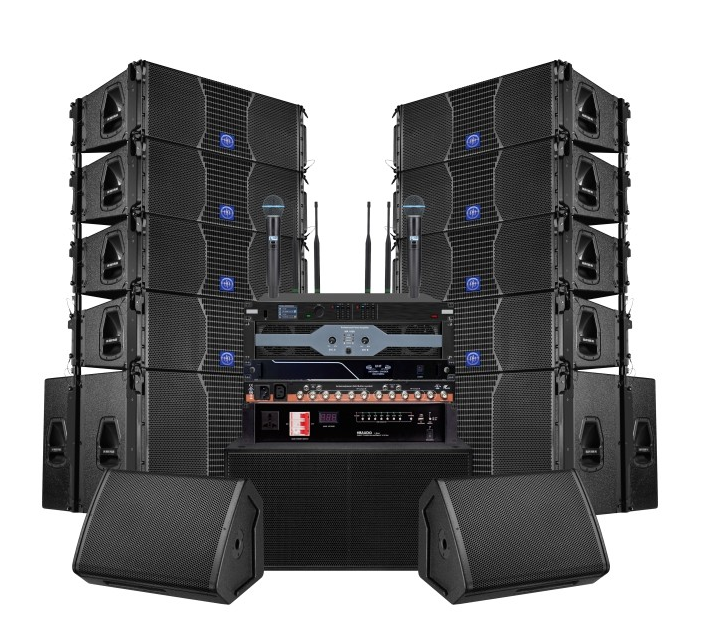Understanding Sound Latency in Modern PA Systems
Sound delay in wireless PA systems has become a critical concern for audio professionals and event organizers alike. When audiences experience even the slightest audio lag during performances or public addresses, it can significantly impact the overall experience and message delivery. The challenge of managing sound delay wireless PA system operations requires both technical knowledge and practical expertise.
Technical Foundations of Wireless Audio Transmission
Signal Processing and Digital Conversion
At the heart of wireless PA systems lies complex signal processing technology. Audio signals must be converted from analog to digital format, transmitted wirelessly, and then converted back to analog for playback. Each step in this process introduces potential latency, contributing to the overall sound delay wireless PA system users often encounter. Modern systems employ sophisticated algorithms to minimize these conversion times, but understanding the basics helps in optimizing performance.
Wireless Protocols and Their Impact
Different wireless protocols affect transmission speed and reliability differently. While Bluetooth offers convenience, it typically introduces more latency compared to professional-grade wireless systems using proprietary protocols. Professional PA systems often utilize specialized wireless technologies operating in the UHF or 2.4GHz bands, designed specifically to minimize delay while maintaining audio quality.
Common Causes of Audio Latency
Distance and Physical Obstacles
Physical distance between transmitters and receivers plays a crucial role in sound delay wireless PA system performance. Every foot of distance adds microseconds of delay, which can become noticeable in larger venues. Additionally, physical obstacles like walls, metal structures, and electronic interference sources can force signals to take longer paths or require additional processing to maintain clarity.
System Configuration Issues
Improper system setup often leads to unnecessary latency. This includes misconfigured buffer sizes, incorrect sample rates, and suboptimal routing of audio signals through multiple devices. Each additional processing step or device in the signal chain introduces its own delay, creating a cumulative effect that can become significant.

Professional Solutions for Minimizing Latency
Hardware Optimization Techniques
Professional audio engineers employ several hardware optimization techniques to reduce sound delay wireless PA system issues. This includes using high-quality wireless receivers with minimal processing time, positioning antennas optimally, and implementing distributed speaker systems with proper time alignment. Modern digital mixing consoles often include built-in delay compensation features that can help synchronize multiple audio sources.
Software and Digital Processing Solutions
Advanced digital signal processing (DSP) plays a vital role in managing latency. Contemporary software solutions offer sophisticated algorithms for latency compensation, automatic delay calculation, and real-time adjustment capabilities. These tools help audio professionals maintain precise timing across complex PA system setups.
Best Practices for System Setup
Pre-Installation Planning
Successful wireless PA system installation begins with thorough planning. This includes conducting site surveys to identify potential interference sources, mapping optimal equipment locations, and calculating expected signal paths. Proper planning helps minimize sound delay wireless PA system issues before they arise.
Regular Maintenance and Monitoring
Maintaining optimal system performance requires regular monitoring and maintenance. This includes checking wireless signal strength, updating firmware, and performing periodic system calibrations. Professional audio technicians should establish routine maintenance schedules and implement monitoring protocols to catch potential issues early.
Future Trends in Wireless Audio Technology
Emerging Technologies
The audio industry continues to innovate with new technologies aimed at reducing latency. Advanced wireless protocols, improved digital processing algorithms, and more efficient hardware designs are constantly being developed. These innovations promise to further minimize sound delay wireless PA system challenges while improving overall audio quality.
Integration with Smart Systems
Future wireless PA systems will likely feature increased integration with smart technologies, allowing for automated optimization and real-time adjustments. Machine learning algorithms may help predict and prevent latency issues, while cloud-based solutions could offer new ways to manage and monitor system performance.
Frequently Asked Questions
What causes wireless audio delay in PA systems?
Wireless audio delay can be caused by multiple factors, including signal processing time, distance between components, interference from other electronic devices, and system configuration settings. Digital conversion processes and wireless transmission protocols also contribute to overall latency.
How much latency is acceptable in a wireless PA system?
Professional audio standards typically consider latency under 10 milliseconds to be acceptable for live sound applications. However, the acceptable threshold may vary depending on the specific use case, with some situations requiring even lower latency for optimal performance.
Can weather conditions affect wireless PA system latency?
Yes, environmental factors like humidity, temperature, and atmospheric conditions can impact wireless signal transmission, potentially affecting system latency. Professional systems are designed with features to compensate for these variables, but extreme conditions may still require additional optimization.

